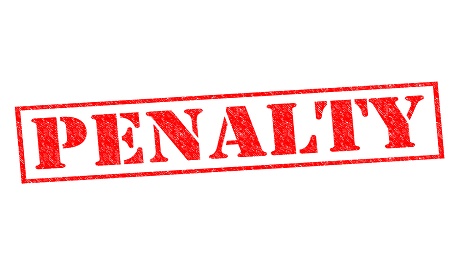A question I continually hear from my clients is, “How do I pay less tax?” But as you know, there is no simple answer to this question. While tax reduction strategies do exist, they are limited for the majority of taxpayers−and they do take some planning and attention. But there is one tax saving approach we can always assist our clients with, and that is educating them about tax penalties. What follows is a list of the most punitive tax penalties along with simple tips on making sure your clients are never faced with them.
Failure to Make Retired Minimum Distributions
Do you have any retired clients who are 70 ½ or older, or who turned 70 ½ this year? A quick and easy way to help them save on taxes is to make sure they take their Required Minimum Distributions (RMDs). Failure to do so can result in one of the most punitive tax penalties of all–50% of the required amount not withdrawn. Remember, the rule does not apply for those who own less than 5% of a company that they are still working at.
You can help your clients avoid this penalty by checking in with them now to remind them about taking their RMDs. There are numerous RMD calculators available online that will help you determine the correct amount. You will need your client’s previous year-end account balance for all the IRAs and pension plans subject to the RMD and their age at year end. A special rule extends the deadline to April 1st for those who turn 70 ½ during the year.
If you do happen to have a client who ends up with an RMD penalty you may be able to help them get it waived if you can show “reasonable error” and “reasonable” steps they are taking to correct it.
Premature Retirement Plan Distributions
One of the most deceiving penalties of all is the penalty for premature retirement plan distributions. While a client who needs immediate cash may not be deterred when you tell them about this 10% additional tax, it’s important that they understand the full impact it may have on their financial situation. This penalty hurts your clients not only in the year it applies. The transaction that caused the penalty–the early distribution itself–may carry ramifications that extend into your client’s retirement because the money is no longer in their account and growing.
Many taxpayers who take distributions don’t realize that this 10% penalty is in addition to their regular tax rate, and that the additional taxable income could push them into a higher tax bracket. It could also trigger the Net Investment Income Tax of 3.8 % and the Additional Medicare Tax of 0.9%.
While there are numerous exceptions to the penalty–for college, medical, insurance, and home purchase expenses−a careful reading is required to determine eligibility. For example, one of the trickiest is the exception for medical expenses. The penalty is waived only on the amount of deductible medical expenses, which is the amount that exceeds either 7.5% or 10% of your client’s AGI, depending on their age.
In addition, I’ve seen many taxpayers take funds from their 401(k)s under the belief that there is an exception for a first time home purchase. But this exception is only for Individual Retirement Arrangements (also known as Individual Retirement Accounts).
You can help your clients avoid this penalty by reminding them each year to call you before making a retirement plan transaction. With a simple calculation you will be able to estimate for them how much tax they will have to pay on the distribution, which will help them to at least make an informed decision and perhaps decide to explore other options.
Failure to File FBAR
Your clients who have a financial interest or signature authority over a foreign financial account that has a total value of $10,000 at any time during the calendar year are required to report the accounts annually to the department of the Treasury via FinCEN 114, Report of Foreign Bank and Financial Accounts, formerly called the FBAR.
The penalty for failing to file this form is $10,000 if the failure to file is non-willful. For those who are deemed to have willfully failed to report their accounts, the penalty can be the greater of $10,000 or 50% of each account balance for each year.
Many taxpayers are not aware that this penalty applies to foreign gambling accounts. You can help your clients avoid this penalty by asking all the right questions during your interview to uncover any offshore or foreign accounts they may own or have authority over. If you do know your clients have reportable accounts, complete the FINcen form for them while you are doing their taxes, or set up a special appointment for those who go on extension. Keep in mind, this form is due June 30, 2016, for the tax year 2015 with no extensions, and it is not part of the 1040 filing. The due date for the form for 2016 tax year will be April 15, 2017, and a new six-month extension will be available.
Payroll Tax Penalties
There are numerous penalties for business owners who fail to follow the employment tax rules, but the most serious of all is the Trust Fund Recovery Penalty. Your business owner clients who fail to collect, account for and pay over payroll (i.e., Trust Fund) taxes are considered to be violating a known legal duty and are subject to criminal charges. Disregarding the requirements can result in serious punishments, including up to five years of jail time when the failure is determined to be willful. The monetary penalty is $10,000, plus 100% of the amount of the unpaid payroll tax deposits.
One of the important points your clients should understand is that the penalty applies to the person or group of people who are responsible for and have the power to collect, account for, and pay the taxes, and that an individual person can be held liable and/or charged with a crime.
Be sure to check in with any clients who have responsibility for paying employees to make sure they are keeping up with this important responsibility.
Individual Shared Responsibility Payment
The Individual Shared Responsibility Payment is the lesser of a flat dollar amount or the average annual premium amount for a bronze level plan. That flat dollar amount is the greater of a monthly flat rate penalty amount, or 2% of income above a threshold amount. For 2015, the penalty amount is $325 per adult, $162.50 per child up to $975−or 2% of household income. The 2016 flat rate penalties are more than double these amounts, and the income percentage goes up to 2.5%.
The penalty for not having health insurance coverage is assessed for any month that your client or a member of your client’s family who is on the tax return goes without coverage for more than three months and does not qualify for an exception. It also applies to family members who qualify as dependents but who are not listed on the tax return.
You can help your clients understand their coverage options, eligibility for the Premium Tax Credit or for an exception to the penalty. Some may need your assistance in completing the various forms, or perhaps with understanding how the process works between insurance companies and the Marketplace.
The common theme in all of this is regular communication and education. It is important for us to keep in mind that tax responsibilities are not the first thing our busy clients are thinking about, and in many cases they are not on their radar at all. Simple check-ins and reminders can go a long way towards keeping your clients not only compliant but penalty-free.
————–
Dave Du Val, is vice president of customer advocacy at TaxAudit.com, the largest and fastest-growing IRS audit defense service for individuals and small businesses.
Thanks for reading CPA Practice Advisor!
Subscribe Already registered? Log In
Need more information? Read the FAQs
Tags: Auditing, Income Tax, IRS





